NIL
Money Matters, Part II
Story Links Intercollegiate athletics have entered a historic new era after judge Claudia Wilken recently granted final approval to the $2.8 billion settlement of the class-action antitrust lawsuit House v. NCAA. Over three Fridays, we are examining the immediate and future implications of the House Settlement and what it means for WVU athletics. This is […]


Story Links
Intercollegiate athletics have entered a historic new era after judge Claudia Wilken recently granted final approval to the $2.8 billion settlement of the class-action antitrust lawsuit House v. NCAA. Over three Fridays, we are examining the immediate and future implications of the House Settlement and what it means for WVU athletics. This is the second installment.MORGANTOWN, W.Va. – Throughout its long and storied history, West Virginia University athletics has encountered critical pivot points in its existence.In the early 1920s, Athletic Director Harry Stansbury’s willingness to invest in a new football stadium put Mountaineer football on a much larger stage, and then a few years later, he was able to successfully fight off state superintendent of schools George Ford’s desire to make WVU a part of the state college system under one governing board, which would have placed West Virginia’s flagship university on par with its much smaller peers.Stansbury rightfully argued that by doing so, and with WVU joining the West Virginia Athletic Conference in the process, it would be catastrophic to the prestige of the University. Forward thinking alums and state officials agreed.In the late 1960s, upon the urging of football coach Jim Carlen, West Virginia University left the Southern Conference and committed to a big-time Eastern independent schedule that also included intersectional games against California, Stanford, Illinois, SMU, Kentucky, Oklahoma and Arizona State.When Carlen would talk to his athletic director Red Brown about this, he framed it in a way that made it clear that the University’s status was on the line.”Mr. Brown, I know you are a basketball man and everything, but we’re in a different world now,” Carlen told him. “These people here need something to grab hold of. You’ve got to help me here a little bit now. “We have to get out of the Southern Conference because we’re better than that. I want to play Kentucky and Tennessee; I want to play schools people want to see us play, and I want to go to bowl games every year,” he said.Brown, too, had big aspirations and after years of asking, he eventually convinced the state to fund a new basketball arena in 1967.Forward-thinking West Virginians were on board with those things, as they were in the mid-1970s when the athletic department reached another pivot point after it became clear that aging Mountaineer Field needed replaced.Many wanted the old stadium remodeled with a 10,000-seat deck constructed on one side to increase its capacity to 45,000. Coach Frank Cignetti was part of a group favoring to build a new stadium in another part of town, arguing the viability of Mountaineer athletics was at stake.Forward-thinking people in the state capitol demanded that a new stadium be built in a different part of town.”What this thing finally came down to was a group in Charleston that really wanted to build a new stadium, and that sort of put an end to renovating the old stadium,” the late Cignetti recalled in 2020, two years before his death. “There were a lot of people at the time questioning if West Virginia could really make it big time in football, but if you look at the success Don Nehlen had there and the coaches after him, they wouldn’t have achieved that without that stadium.”Again, the courageous forward thinkers were on the right side of history, as was the case in 2010 when President Jim Clements and Athletic Director Oliver Luck steered West Virginia University out of the Big East and into the Big 12 Conference.The move kept WVU at the big table during the last decade when conference realignment turned college sports upside down, and then more recently, with the realignment that followed after the departures of Texas and Oklahoma from the Big 12 to the SEC.Today, the recent House Settlement is requiring another seismic landscape change for West Virginia University. Director of Athletics Wren Baker was hired in late November 2022, in part, to help guide Mountaineer athletics through a new era of uncertainty in collegiate sports fueled by existential legal challenges regarding student-athlete compensation and name, image and likeness (NIL) rights.
Director of Athletics Wren Baker was hired in late November 2022, in part, to help guide Mountaineer athletics through a new era of uncertainty in collegiate sports fueled by existential legal challenges regarding student-athlete compensation and name, image and likeness (NIL) rights.
The recent settlement approved by Judge Claudia Wilken stipulates that colleges and universities can directly pay athletes approximately $20.5 million per year beginning in 2025, increasing by 4% annually over the next 10 years.
For West Virginia University, that means roughly 20% of its entire yearly athletic budget will now go toward student-athlete compensation.
That’s a significant chunk of money!
Consequently, Baker’s choices basically came down to either fully funding the revenue share or not fully funding it and relegating Mountaineer athletics to second-class status, which was not really an option. So, by choosing to fully fund it, his next major decision was how to do it. He could either cut staff and programs to make up the difference or explore additional ways to increase revenue.
Some schools have chosen to cut staff and sports, a course Baker considered, but had he done so, it would have been like cutting off an appendage because the overall size of WVU’s athletics department is much, much smaller compared to its power conference peers.
“We have less people than any other school in the Big 12 in terms of full-time employees, and generally, our people are not as well-paid as a lot of our colleagues around the country, so we are not in a position where we can cut 100 people like some schools have,” Baker said recently. “That would be about half our workforce.
“We don’t really have that option.”
To chart the appropriate course, Baker did his research and conducted a thorough analysis of WVU’s athletics operations, taking a robust look at the entire department.
In addition to the department increasing athletic revenue by 5 to 6% annually during the three cycles that Baker has been here, his research concluded that relative to what WVU athletics currently generates in terms of parking, ticketing, media rights and fundraising, its performance has been on par or ahead of many of its power conference peers.
One critical aspect that hurts the department, as Baker has indicated on many occasions, is a lack of premium seating at Milan Puskar Stadium and the WVU Coliseum.
“That is something we have to fix if we want to grow,” he admits.
Baker noted other aggressive initiatives are now underway to increase the department’s budget.
“When people see us do things like restructuring men’s basketball seating or looking at our parking allotments, we had a lot of people over the years been given grace on way more parking passes than they are actually allotted,” Baker mentioned.
“Well, the problem with that is a lot of those parking passes have a donation requirement, so everybody who is getting X amount, when we did an audit, it amounted to hundreds of thousands of dollars (in lost revenue),” he explained.
“I know this upsets people who feel like, ‘Hey, I’ve been with you, and I’ve been loyal’ but the reality is, we are not in a position to make decisions to forgo revenue anymore. And in the past, we’ve done that for the sake of trying to keep everyone happy.”
Baker said it is now imperative that Mountaineer athletics get market value for everything that can be offered.
“We can’t do that with freebies and handshakes,” he said. “If you look at our budget overall, relative to our conference, it remains in the bottom quartile, so we run a leaner ship.”
The most striking aspect of Baker’s findings was related to campus investment. It was significantly lower than most of West Virginia’s Big 12 peers and many of its power conference and regional peers as well.
As one University official once told me, “Mountaineer athletics has been West Virginia University’s best customer for years.”
Going back to the 1980s, when Don Nehlen’s football program was enjoying unprecedented success, the popular catchphrase within the department was “self-sustaining.”
Naturally, it was a source of great pride. But this unique designation came with a significant cost to athletics, in real dollars and potential investments toward the future.
About five years prior to West Virginia playing Notre Dame in the 1989 Fiesta Bowl for the national championship, athletics began paying the University for its tuition waivers. Through the years, the cost for those tuition waivers has ballooned to more than $10 million per year. Ed Pastilong, WVU’s athletic director at the time, had no other choice but to fundraise to pay for the scholarships awarded to student-athletes, diverting potential revenue for capital improvements to general operating costs.
Averaged out over decades, those tuition waivers amount to hundreds of millions in real dollars Mountaineer athletics has transferred to the University’s general budget.
Additionally, a decision was made sometime in the late 1980s that a portion of West Virginia University’s bowl revenue was to be allocated to the University, which became a factor in 1994 when the department was considering adding premium seating underneath the press box at Mountaineer Field after playing Florida in the Sugar Bowl.
Instead of constructing suites from one end of the stadium to the other, the decision was made to build only 12 at a cost of $2.5 million. The stated goal of the new stadium suites at the time was to create additional income to offset scholarship expenses for Mountaineer athletics. Had there been 36 suites constructed instead of 12, that would equate to a minimum of at least three times more revenue through the years, not to mention the financing for them was to be paid off by 2003.
Funding the construction of additional premium seating at the stadium and new premium seating at the WVU Coliseum today is going to be a massive undertaking.
According to published reports, the Group of 5 programs that were recently added to the Big 12 are being subsidized by as much as $40 million per year, and if that amount continues, combining that with their future Big 12 media rights distributions means their athletic budgets will easily surpass WVU’s.
In one extreme instance, former Big East member Rutgers was subsidized $70 million in 2024 to cover its athletic budget while competing in the Big Ten Conference, according to NJ.com. In the meantime, Rutgers has also invested hundreds of millions in capital improvements to the school’s basketball arena and football operations center.
It is clear Rutgers is willing to invest in its athletics program to maintain the prestige of being aligned with some of the most elite universities in the country in the Big Ten.
Baker admits he’s had some hard conversations with campus leadership about the unequal playing field Mountaineer athletics has been required to navigate through the years.
“We’re assuming we’re going to out-resource the (Group of 5 schools) coming into the league, but if their campus investment stays the same, and they begin getting full Big 12 revenue distribution, they are going to zoom right past us,” he explained. “We are going from being eighth or ninth out of 10 in a 10-member Big 12 to 14th or 15th in a 16-member Big 12.
“Now, we don’t have to have the biggest budget in the Big 12, but we do have to have a budget that’s somewhere in the median,” he added.
What the House Settlement is doing today is requiring those who support and love West Virginia University to make a choice – do they want to continue to have a first-rate athletics program funded on par with its peers?
The years of Mountaineer athletics punching above its weight class and being asked to do more with less are likely over if WVU supporters desire consistent success and remaining relevant in the college athletics landscape.
In 2017, when Shane Lyons was athletics director, he commissioned Tripp Umbach to do a study on the economic impact WVU athletics has on the state of West Virginia and Monongalia County.
Those numbers were eye opening.
The total economic impact for the state was $302.7 million in 2017, which adjusted for inflation, equates to nearly $400 million today. The economic impact to Monongalia County was $78.8 million, or about $103 million in 2025.
Clearly, a great deal is riding on the financial health and well-being of Mountaineer athletics. The state’s identity and branding are intertwined in the successes West Virginia University athletics enjoys today.
Baker, whose career in college sports has taken him and his young family to many different parts of the country, is keenly aware of this.
“I would sit here and espouse the value of successful athletics for any campus, but I think in this state, it’s more important than any other state in the entire country,” he explained. “I think people associate the brand and the success of our state with the success of WVU and WVU athletics, and I would throw WVU Medicine in there as well.
“For our state to be in a healthy economic position, it needs WVU, WVU Medicine and WVU athletics to also be in really good condition. What is that worth? It is going to require some kind of investment from everyone.”
Today, because of the House Settlement, Mountaineer athletics has reached another critical pivot point in its history.
When these moments have arrived in the past, the forward-thinkers have usually prevailed.
Next Friday, our final installment will explore the potential of the recently launched Gold & Blue Enterprises.
NIL
“We Should Be Rolling in It”: When Dawn Staley Opened Up About NIL Challenges and Staying Competitive in Recruiting
South Carolina Gamecocks coach Dawn Staley once weighed in on the current NIL era of college basketball with regards to the challenges that could arise. In Nov. 2023, Staley appeared on “The ETCs” show (via the Boardroom YouTube channel), where she was asked by host Eddie Gonzales about her stance on NIL being tremendously beneficial […]

South Carolina Gamecocks coach Dawn Staley once weighed in on the current NIL era of college basketball with regards to the challenges that could arise. In Nov. 2023, Staley appeared on “The ETCs” show (via the Boardroom YouTube channel), where she was asked by host Eddie Gonzales about her stance on NIL being tremendously beneficial to players but difficult for player-recruiting by teams.
Staley said she doesn’t want money to be the biggest factor for a program to recruit a player. However, she acknowledged the challenges that come with it and the potential advantages and disadvantages that coaches will have to take into account when it comes to recruiting.
“As coaches, we have access to, you know, so many sponsors. We got relationships with companies, and we utilize that to make it more appealing. There are things that are called collectives now, and we have to work through the collectives. To be completely honest, collectives do a lot of work for football because football is the, you know, they’re the main breadwinners, and I get that,” Staley explained (5:53).
“But when we’ve had as much success as we’ve had at the University of South Carolina, we should be rolling in it, and we’re not. So, there are still ways in which we can do that. I like it; it’s a challenge. I look at the NIL space as a challenge. We may not have the most, but I want to be competitive when it comes to recruiting young people, and I don’t want that to be the factor, you know, if someone beats us out by $25,000 or $50,000, I don’t want that to be the determining factor,” she added.
Staley is coming off a 2024-25 season in which she and her Gamecocks squad finished with an overall record of 35-4 (15-1 SEC). They went all the way to the 2025 national championship game to try and defend their title, but lost to the UConn Huskies by 23 points, 82-59.
Dawn Staley has won two national titles in the NIL era of college basketball
It seems as though coach Dawn Staley has adjusted well to the NIL era of collegiate hoops, as she has turned her South Carolina Gamecocks program into one of the premier ones in the sport with their recent success.
In the last five years, Staley and the Gamecocks have won two national titles, the first being the 2022 iteration with a 64-49 win over the UConn Huskies and, more recently, with an 87-75 victory over the Iowa Hawkeyes in 2024.
College Sports Network has you covered with the latest news, analysis, insights, and trending stories in college football, men’s college basketball, women’s college basketball, and college baseball!
NIL
Texas Tech is winning big on the recruiting trail—and SEC fans can’t handle it
Texas Tech’s recent recruiting success, combined with its headline-grabbing haul from the transfer portal, signals a clear shift in the landscape of college football. Gone are the days when elite recruits were essentially guaranteed to land at blue-blood programs like Alabama, Ohio State, or Texas. In the past, a school like Texas Tech would’ve had […]

Texas Tech’s recent recruiting success, combined with its headline-grabbing haul from the transfer portal, signals a clear shift in the landscape of college football. Gone are the days when elite recruits were essentially guaranteed to land at blue-blood programs like Alabama, Ohio State, or Texas. In the past, a school like Texas Tech would’ve had little chance of competing for top talent in the country.
Those days are over.
This shift can largely be attributed to the rise of NIL opportunities, which have leveled the playing field in ways previously unimaginable. Fans of historically smaller programs are celebrating this new reality, assuming they have the funds to capitalize (hello, Texas Tech). Meanwhile, many SEC fans are struggling to accept that their programs no longer have an automatic claim on every top prospect.
Take five-star offensive lineman Felix Ojo, for example. When Texas Tech reportedly outbid the likes of Texas and Ohio State for Ojo with a lucrative multi-million dollar NIL deal, the college football world took notice—and SEC fans lost their minds. When the Red Raiders followed that up by landing the No. 1 overall prospect in the 2027 class, it sparked even more disbelief and backlash from SEC loyalists.
To cope with this new reality, many of those fans have convinced themselves that players are just chasing easy money, opting for quick paydays at places like Texas Tech instead of proving themselves in the so-called “best” conference in the country. But here’s the problem: the SEC isn’t what it used to be.
Yes, the SEC once instilled fear across the college football world. It boasted the biggest, fastest athletes, and regularly dominated on the national stage. But that dominance has faded in recent years. The last two national champions have come from the Big Ten. Alabama, once an unstoppable force under Nick Saban, suddenly looks very beatable—just ask teams like Michigan and even Vanderbilt. LSU remains solid under Brian Kelly, but the Tigers are far from the powerhouse they were. Even Georgia, a recent back-to-back national champion, just lost the top prospect from its own state to Texas Tech.
For years, SEC programs enjoyed a recruiting edge through backdoor deals and under-the-table incentives. Now that paying athletes is legal, programs like Texas Tech are able to play the same game—only better. And that’s not sitting well with a fan base used to having it all. The truth? The SEC isn’t entitled to anything anymore.
In this new era, Texas Tech is playing by the rules—and thriving. While SEC fans cling to the belief that losing top recruits is a sign of players lacking the desire to compete at the “highest level,” the reality is far more uncomfortable: the SEC is no longer the premier conference in college football. Programs like Texas Tech are rising, and they’re doing it the right way—out in the open.
NIL
Kentucky announces new NIL club, BBN United
New NIL club sets tone for Kentucky’s revenue sharing efforts The John Calipari era brought “La Familia” to Kentucky basketball’s NIL scene. His departure led to the launch of “Club Blue,” complete with high-profile concerts, team events, and tiered gifts for donors. Now, in the Mark Pope era, Kentucky athletics is making another major shift […]

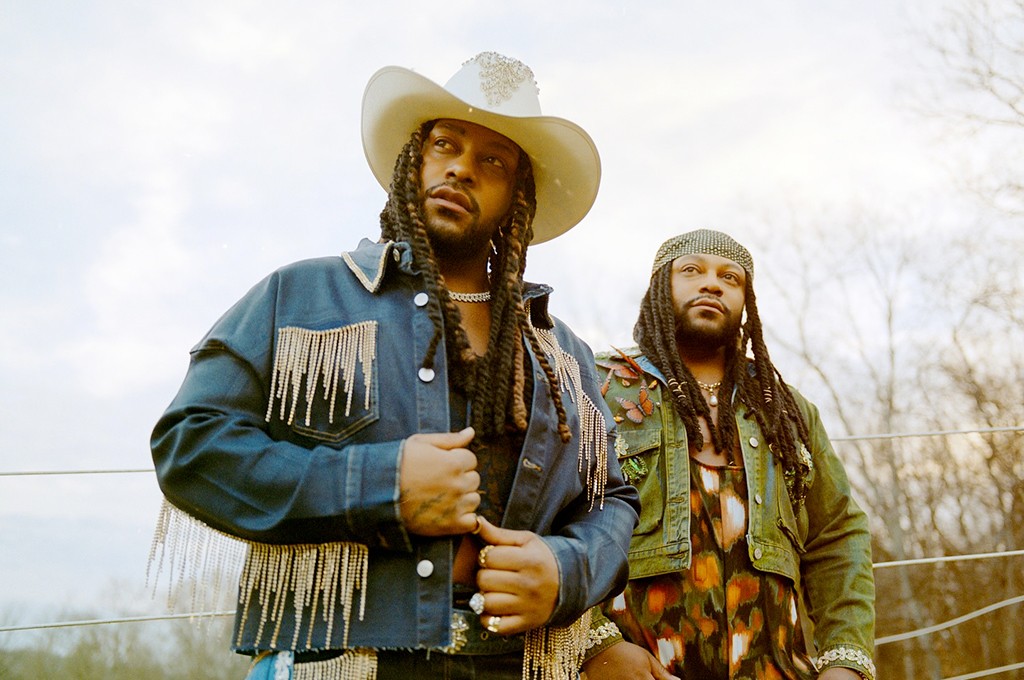

New NIL club sets tone for Kentucky’s revenue sharing efforts
The John Calipari era brought “La Familia” to Kentucky basketball’s NIL scene. His departure led to the launch of “Club Blue,” complete with high-profile concerts, team events, and tiered gifts for donors. Now, in the Mark Pope era, Kentucky athletics is making another major shift — introducing BBN United.
According to a release from the University of Kentucky, BBN United will be the official fan membership program for UK Athletics, designed to connect Big Blue Nation with its student-athletes like never before.
“It’s where passion fuels purpose,” the release states. “BBN United isn’t just a membership. It’s a mission to elevate our student-athletes in the next era of NIL and athletics success.”
While official sign-ups aren’t live yet, fans can register their interest at bbnunited.ukathletics.com to become founding members once the program launches. The benefits promise to include premium content, exclusive experiences, community events, and behind-the-scenes access across all sports.
The move comes as NIL programs nationwide evolve from simple collectives into multi-sport, fan-facing engagement hubs. Kentucky’s branding is clear — this is for the entire athletic department, not just basketball or football. That means fans could get up-close access to baseball, volleyball, gymnastics, track and field, and more, in addition to the marquee sports.
We are looking forward to launching BBN United soon. Offering exclusive access and one of a kind perks.
🚨 Sign up to be the first to learn more! https://t.co/0WGePwLyhL pic.twitter.com/S5QBQ2O824
— Kentucky Men’s Basketball (@KentuckyMBB) August 8, 2025
BBN United also signals a pivot toward creating a true year-round membership culture — where fan involvement doesn’t end when the season does. From offseason player meet-and-greets to members-only game-day lounges, the possibilities are wide open.
“BBN isn’t a place,” the announcement says. “It’s a movement.” And in the NIL era, movements require funding, organization, and buy-in from the fan base. Kentucky’s hope is that this rebrand will unify supporters under one banner and keep the Wildcats competitive in an arms race that shows no sign of slowing down.
For now, the only thing left for fans to do is sign up for updates — and prepare for another new chapter in Kentucky’s NIL journey.
NIL
LSU Football Staffer Raves About a Pair of Oklahoma Sooners Transfer Additions
Brian Kelly and the LSU Tigers reeled in multiple immediate impact players via the NCAA Transfer Portal this offseason with a focus on adding weapons on both sides of the ball. Once the portal was open for business, Kelly and Co. reached out to Oklahoma Sooners transfers Bauer Sharp and Nic Anderson as the program […]

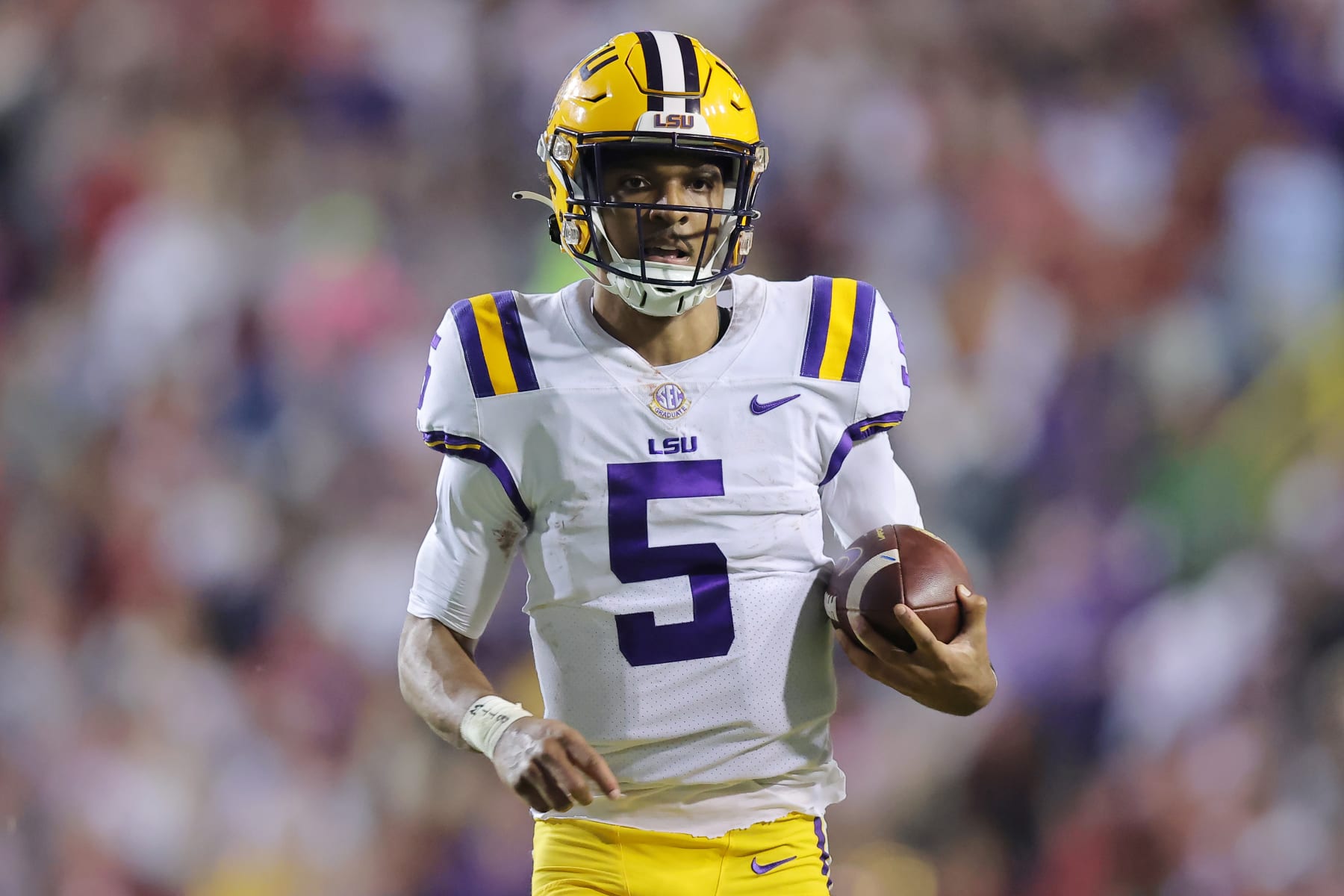
Brian Kelly and the LSU Tigers reeled in multiple immediate impact players via the NCAA Transfer Portal this offseason with a focus on adding weapons on both sides of the ball.
Once the portal was open for business, Kelly and Co. reached out to Oklahoma Sooners transfers Bauer Sharp and Nic Anderson as the program intensified its push.
Now, after signing the pair of Southeastern Conference transfers, the Oklahoma duo has quickly turned heads in Baton Rouge.
On Friday, LSU offensive coordinator Joe Sloan raved about his new weapos.
Bauer Sharp: Tight End
The LSU Tigers added Oklahoma Sooners tight end Bauer Sharp in December after the talented SEC transfer made the move to Baton Rouge.
Now, after leading Oklahoma in receptions [42] and receiving yards [324] in 2024, Sharp is carrying his momentum in the purple and gold.
The Alabama native quickly made a name for himself during Spring Camp with the LSU Tigers impressed with the newcomer.
“Having the tight end involved, I think that’s two things. One, the whole tight end room has done great. Alex is doing a great job with those guys. The growth in Trey’Dez, what (Sharp) is doing on a day-to-day basis in terms of his consistency, has been huge, not just in the tight end room but also offensively,” Sloan said on Friday.
“He brings a mindset to our practice. He brings a mindset to our offense. Our guys feed off of that. That’s what I think has been critical. He plays hard every snap; he’s going to give you everything he’s got, and that’s a physicality and violence in the run game. Then also, he’s twitchy at the top of routes. He’s been able to get separation.
“He’s a really good ball carrier with the football once he catches it. He’s been an awesome addition.”
Sharp has been a stellar addition, but the overall talent-level in the tight end room is what has Sloan enticed at what’s to come.
“Couldn’t be more excited about him but couldn’t be more excited about the growth that Trey’Dez has had and what Donovan’s (Green) brought to the room as well. We have a lot more flexibility with more multiple people than maybe what we’ve had in the past.”
Nic Anderson: Wide Receiver
LSU wide receiver Nic Anderson made the move to Baton Rouge this offseason after a stint in Norman (Okla.) with the Oklahoma Sooners.
After a two-year run with the Sooners, Anderson elected to enter the NCAA Transfer Portal last December prior to signing with the LSU Tigers.
Anderson set the Oklahoma freshman record for touchdown receptions with 10 in 2023 where his 798 receiving yards that year rank No. 2 in Oklahoma history for a freshman.
Now, he’s making an instant impact in Baton Rouge.
“You’ve seen him on the outside. I think he’s had a really good camp. Obviously, the first couple days, he was still going through some protocol and all that. I think he’s had an extremely good camp. I couldn’t be more excited about the way he’s prepared and the consistency at which he’s played every day,” Sloan said.
“I think Coach Kelly has made some remarks about him. He’s extremely talented and can help us in a lot of ways. I just want to continue to see him stack those days over and over. He definitely is a lot more comfortable within the offense than he was in the spring.”
There’s rapport being built between Anderson and LSU quarterback Garrett Nussmeier with Sloan highlighting the connection being created.
“That’s been fun to see and watch him work and watch him gel with Nuss. And gel with the other guys. It’s been good,” Sloan said.
LSU will return to the practice fields on Monday for Day 10 of Fall Camp with the Tigers kicking off Week 3 in Baton Rouge.
LSU Football, Texas Longhorns and Michigan Wolverines Trending in Recruiting
LSU Football and Notre Dame Fighting Irish Making Early Impression on Top Cornerback
No. 1 Athlete in America, Five-Star LSU Football Commit Helping Recruit Top Prospect
Follow Zack Nagy on Twitter: @znagy20 and LSU Tigers On SI: @LSUTigersSI for all coverage surrounding the LSU Tigers.
NIL
NY Racing Team & Syracuse University join forces for Go Bowling at the Glen Cup Series race
Cohen’s choice of the number 44 for his racing team was inspired by influential Black entrepreneurs and athletes, including Elmira native, Ernie Davis, the first African-American to win the Heisman Trophy and a Syracuse football legend. As a former member of the Grambling State football team under the legendary coach Eddie Robinson, Cohen understands the […]
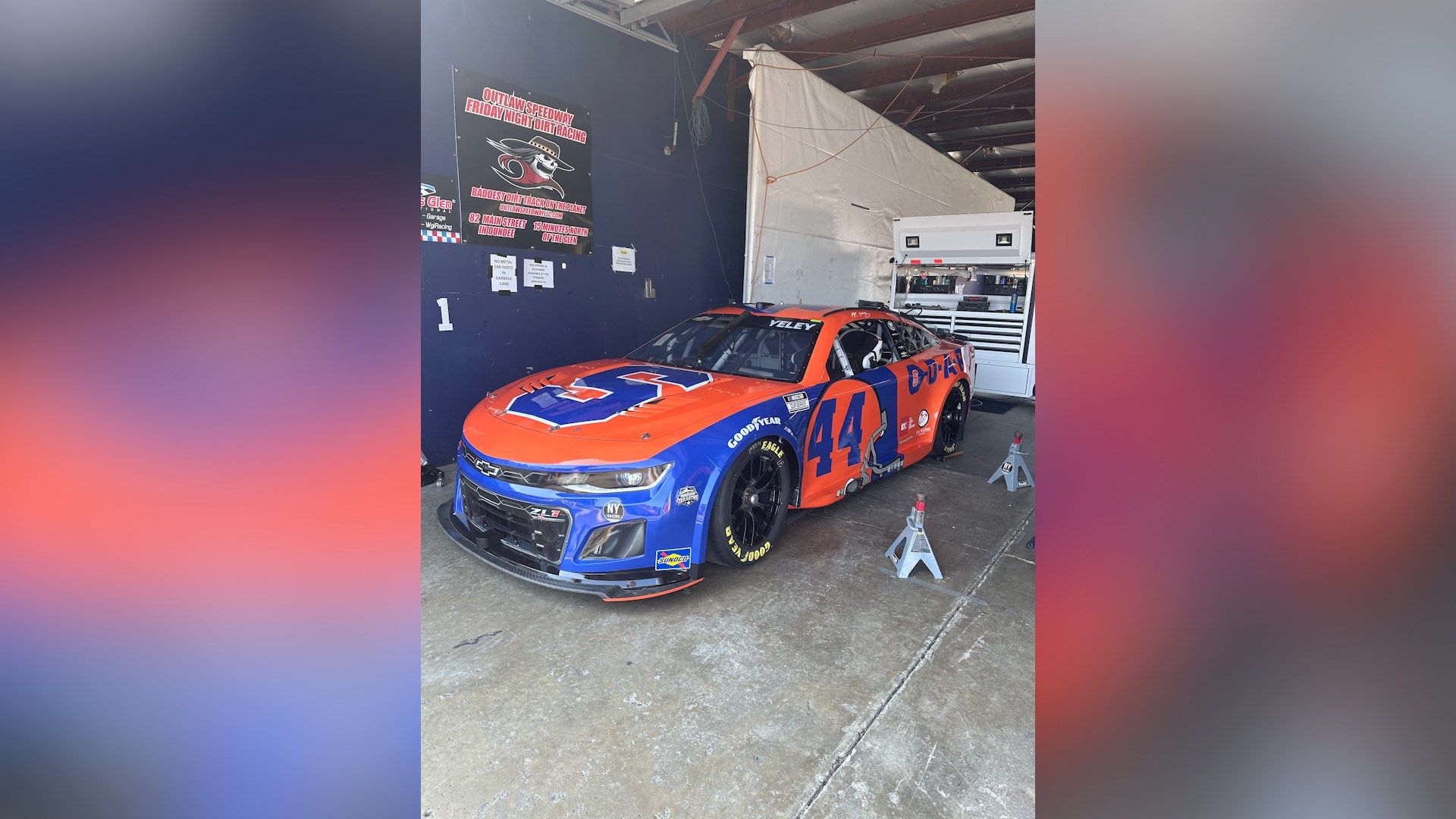
Cohen’s choice of the number 44 for his racing team was inspired by influential Black entrepreneurs and athletes, including Elmira native, Ernie Davis, the first African-American to win the Heisman Trophy and a Syracuse football legend. As a former member of the Grambling State football team under the legendary coach Eddie Robinson, Cohen understands the importance of representation. “Representation matters, just like Ernie Davis matters to me, and I hope I matter to somebody in the next age group that’s coming behind me. So the 44 means a lot to me, and I want to keep it out there and let people know about Ernie Davis,” Cohen explained.
NIL
Athletes First, Sinclair/AMP Sports team up for media partnership
Athletes First, a premier sports representation and marketing agency, and Sinclair, a diversified media company and leader in local news and sports, today announced a landmark events and media partnership. This new collaboration will unite Athletes First’s best-in-class events and world-renowned talent with the top-tier sports properties and vast national audience of Sinclair and AMP […]

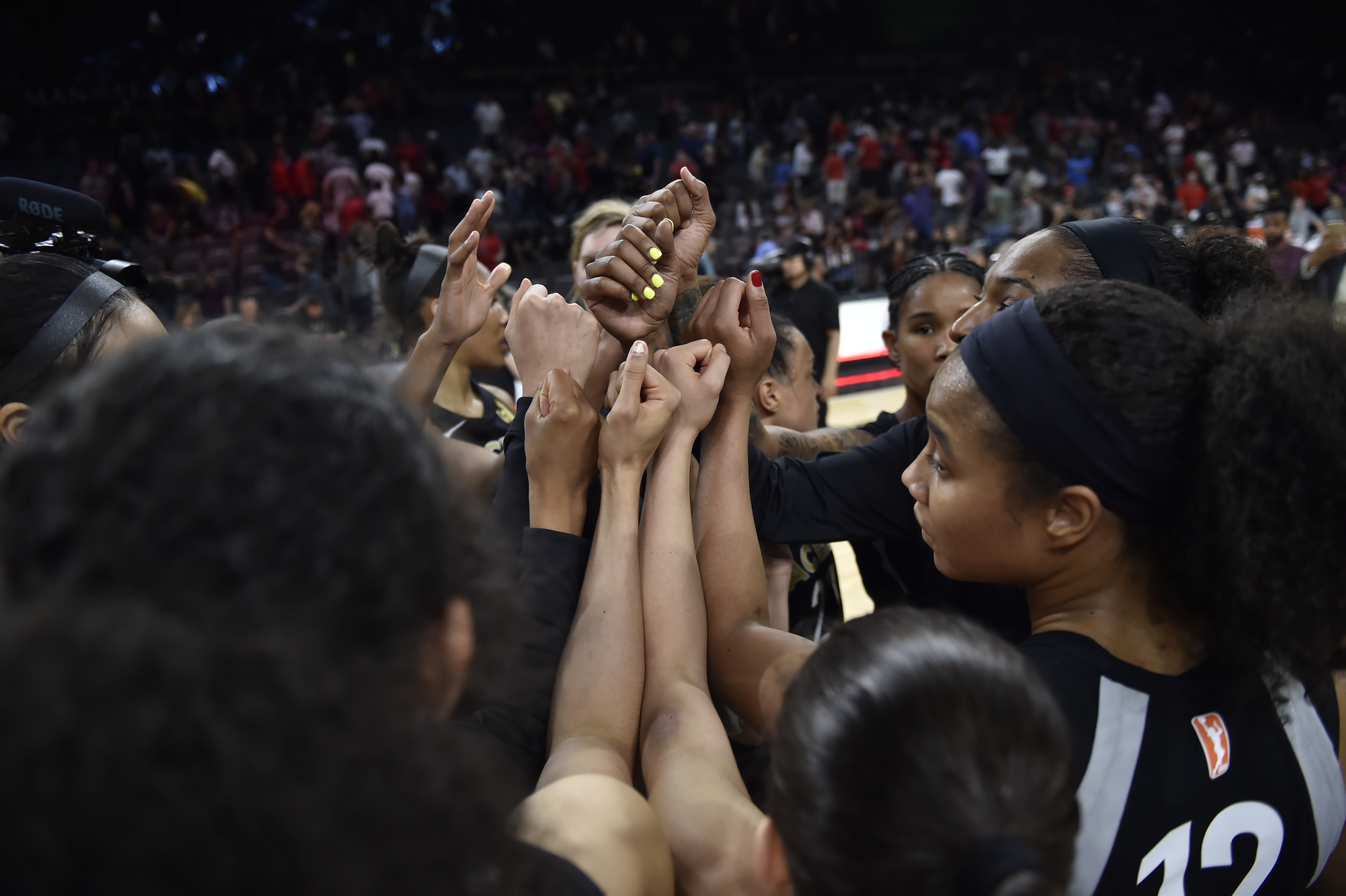

Athletes First, a premier sports representation and marketing agency, and Sinclair, a diversified media company and leader in local news and sports, today announced a landmark events and media partnership.
This new collaboration will unite Athletes First’s best-in-class events and world-renowned talent with the top-tier sports properties and vast national audience of Sinclair and AMP Sports, Sinclair’s growing portfolio of digital content and original podcasts.
“This partnership with Sinclair is a major step forward in how we amplify the impact of our events and our athlete clients,” said Matt Shulman, Head of Properties at Athletes First. “By combining our curated live events and world-class roster with Sinclair’s powerful media reach, we’re creating new ways to engage fans, elevating and enhancing storytelling opportunities, and delivering unparalleled value for our brand partners.”
Athletes First is the premier sports representation and marketing agency, guiding the careers of elite athletes, coaches, executives, and broadcasters. Since 2001, Athletes First has built a reputation for integrity, innovation, and impact across contract negotiations, marketing strategy, endorsement sales, and brand partnerships.
Athletes First clients include Dak Prescott, Ed Reed, Desean Jackson and Jahmyr Gibbs.
As part of the agreement, Sinclair will serve as the exclusive sports media partner for two of Athletes First’s signature live events, including:
- Athletes First presents The Block – An exclusive hospitality and brand activation destination that drew widespread attention and acclaim in New Orleans ahead of the Big Game this past February, redefining the standard for pre-game experiences.
- Athletes First Tailgate Tour – The agency’s traveling college football experience, now entering its third season, which brings hospitality, client interaction, and brand integration to major rivalry games across the country.
“Athletes First is a premier sports agency and has set the bar for athlete-driven activation experiences within college and professional football,” said Eric Welles, SVP, Chief Digital Monetization Officer, Sinclair. “With A1’s elite roster of talent coupled with AMP Sports’ own collection of talent and original shows, as well as our massive media footprint, this partnership is a perfect fit. We are excited to further enhance our strategy to create high-impact, fan-first, 360-degree content with Athletes First across broadcast, digital, social, audio, and live environments, while giving brands new ways to engage with passionate fans and the biggest tentpole moments in sports.”
Sinclair will produce original content and brand activations at the next iteration of The Block—scheduled for San Francisco in February—and host live, original video podcasts from multiple stops on the Tailgate Tour. In addition, event content will be distributed across Sinclair’s sports platforms, maximizing exposure and engagement.
Earlier this year, The Block debuted in New Orleans with a 100,000-square-foot footprint just steps from the Caesars Superdome. Spanning four interconnected mansions and a grand courtyard, the event featured luxury hospitality, brand activations, private content studios, exclusive partner programming, an athlete performance center, and appearances by athletes, celebrities, and influencers.
The media partnership also includes the development of original video podcasts for both national and regional audiences, spotlighting Athletes First’s elite roster of athletes.
The post Athletes First, Sinclair/AMP Sports team up for media partnership appeared first on 2UrbanGirls.
-

 Health1 week ago
Health1 week agoThe Women Driving A New Era In U.S. Ski & Snowboard
-

 High School Sports2 weeks ago
High School Sports2 weeks ago100 days to men's college basketball
-

 NIL1 week ago
NIL1 week agoESPN Announces 'dont wait run fast' by mgk as New College Football Anthem for 2025
-

 Technology2 weeks ago
Technology2 weeks agoAlly Runs New Game Plan in WNBA All-Star Rookie Debut
-

 College Sports2 weeks ago
College Sports2 weeks agoBYU Basketball Adds Aleksej Kostic to 2025
-

 College Sports2 weeks ago
College Sports2 weeks agoCity rows to sporting destination goal on boats of new complexes & old strengths
-

 Sports2 weeks ago
Sports2 weeks agoMore State Schools of the Year
-
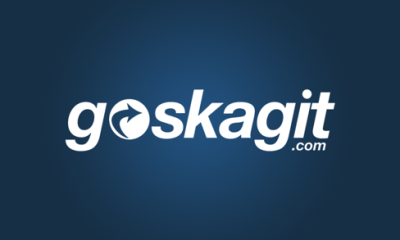
 Sports2 weeks ago
Sports2 weeks agoNtekpere honored as Second Team Academic All-American | APG State News
-
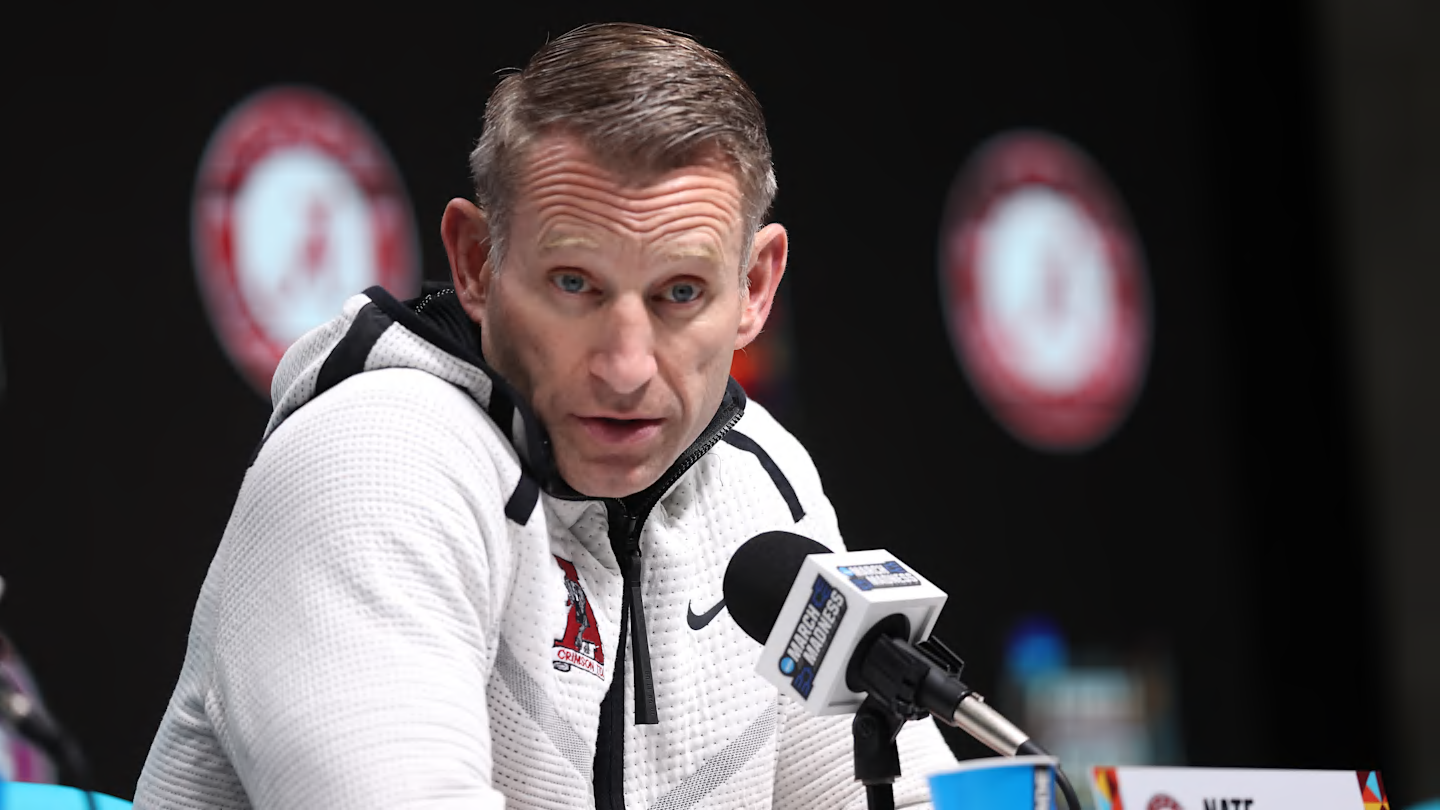
 NIL3 weeks ago
NIL3 weeks agoWill Alabama Basketball truly be only the SEC’s fifth-best team?
-

 Youtube3 weeks ago
Youtube3 weeks agoPulled a LeBron 😳 (via haloballoffical/IG)

































